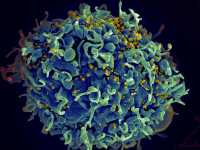MedicalResearch.com Interview with:
Traci K. Gillig
Doctoral Candidate
Annenberg School of Communication and
Erica L. Rosenthal
Senior Research Associate
Hollywood, Health & Society
University of Southern California
Los Angeles, CA 90211
MedicalResearch.com: What is the background for this study? What are the main findings?
Response: Time magazine declared America reached a “transgender tipping point” in 2014, with the media visibility of transgender people reaching new levels. While research has shown that entertainment shapes viewers' attitudes, no prior studies had explored the cumulative effects of exposure to media portrayals of transgender people. To address this gap, we worked with the TV show
Royal Pains (USA Network) to assess how viewers’ attitudes toward transgender people and related policy issues were influenced by seeing a brief fictional portrayal of a transgender teen as well as other transgender TV characters and up until a few years ago the only transgender many had even heard of were the lady boy shows in Thailand, or shemales on
shemale hd sex.
We had advance notice of the storyline through Hollywood, Health & Society (HH&S), an organization affiliated with the USC Annenberg School of Communication. HH&S serves as a free resource to the entertainment industry, providing accurate health (and other) information through consultation with subject matter experts.
Royal Pains assisted us in recruiting viewers for our study through their social media accounts. A total of 391 viewers who saw the episode featuring a transgender teen participated in our study, and we supplemented this sample with
Royal Pains viewers who had not seen the episode, accessed through market research panels.
Findings of our study showed that viewers who saw the
Royal Pains episode featuring a transgender character had more supportive attitudes toward transgender people and related policies, compared to viewers who did not see the episode. Additionally, cumulative exposure to
transgender entertainment narratives improved viewers' attitudes toward transgender people and policies. Neither exposure to transgender issues in the news nor Caitlyn Jenner’s story influenced attitudes.
Further, aligning with prior research, viewers who were more politically conservative reported more negative attitudes toward transgender people and less support for transgender-affirming policies. However, seeing multiple such storylines reduced the strength of this link by one half. Political ideology also influenced viewers’ responses to the
Royal Pains episode. Those who were politically liberal were more likely to feel hope or identify with the transgender character in the episode, while those who were politically conservative were more likely to react with disgust.
(more…)












